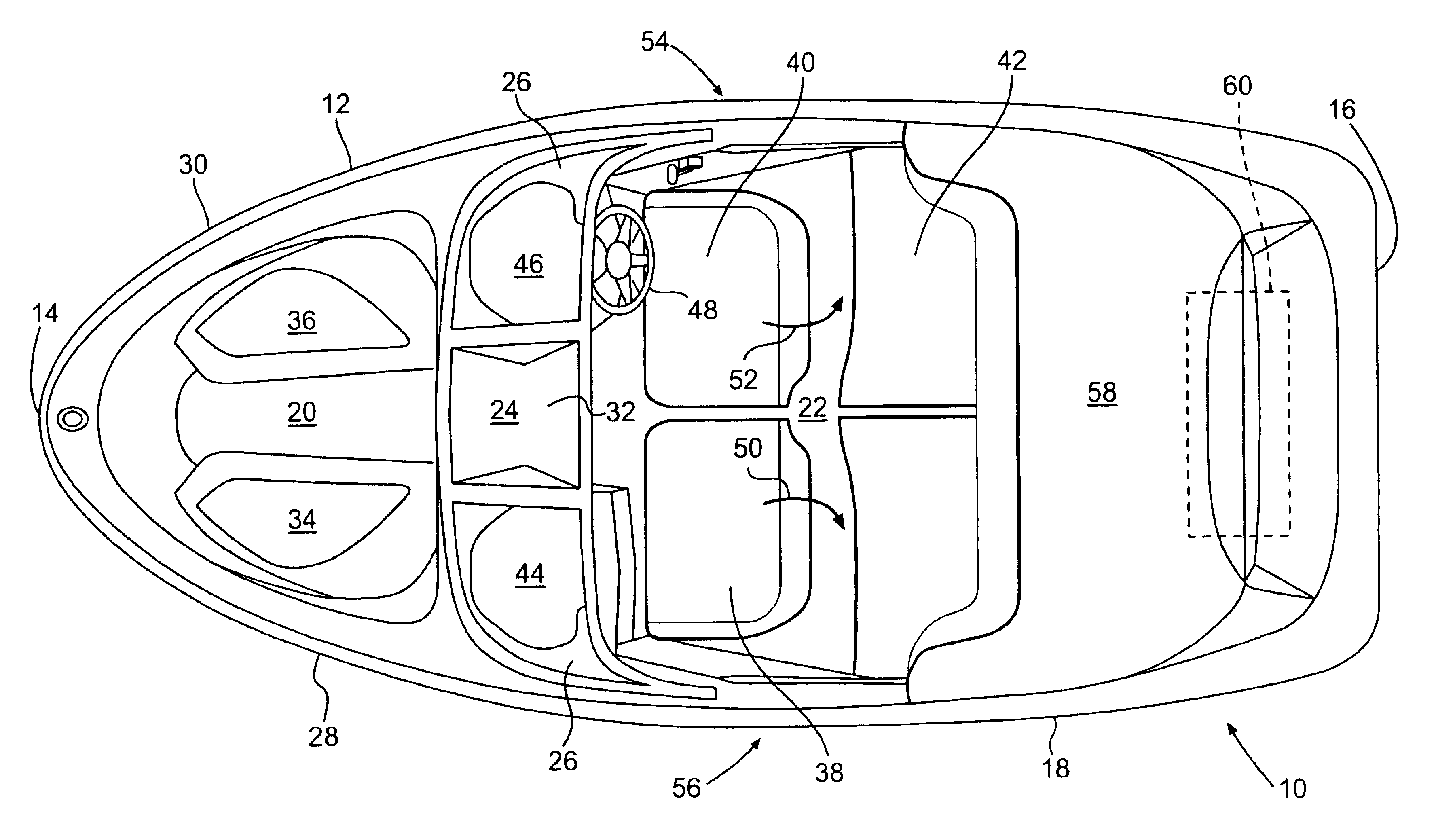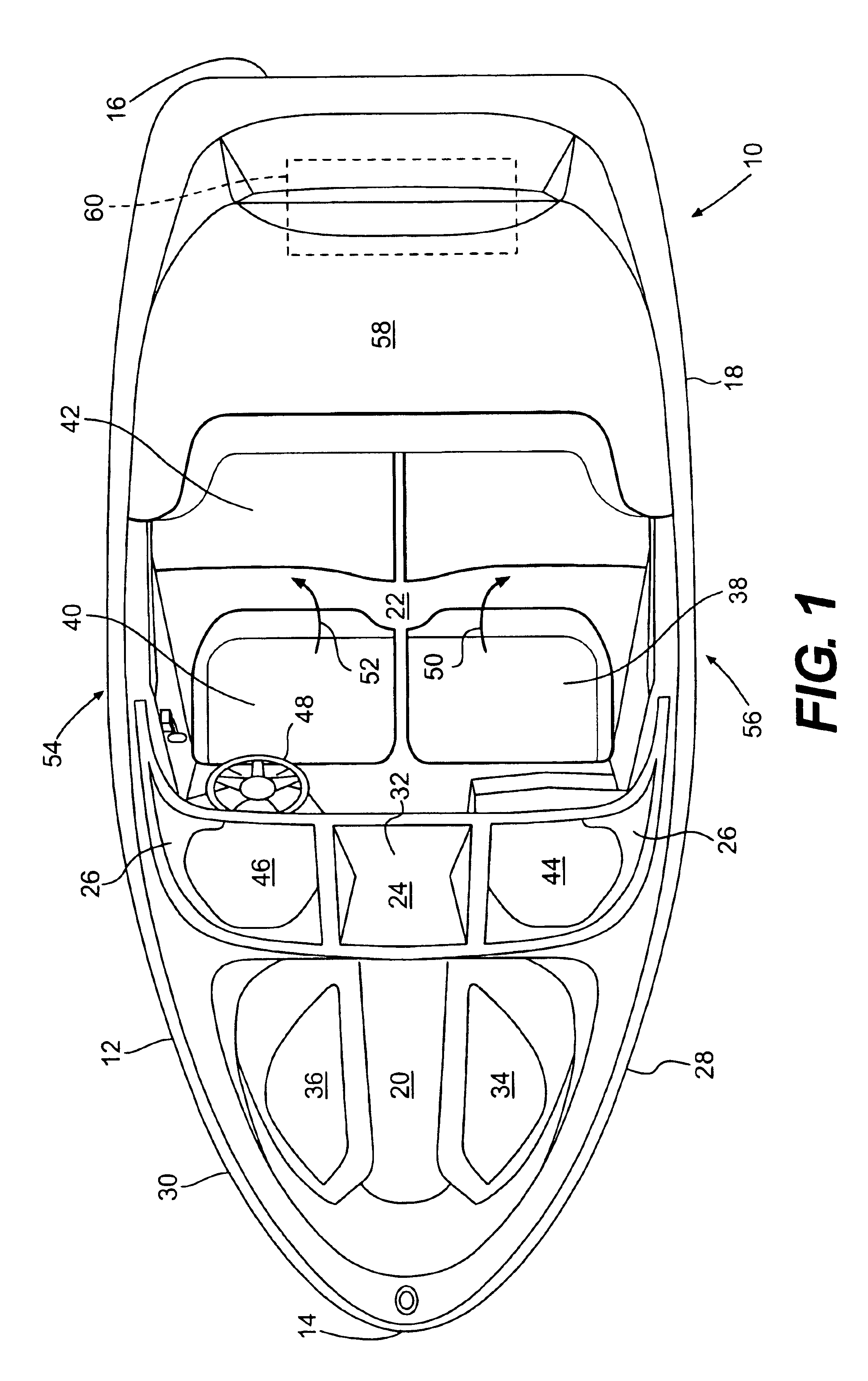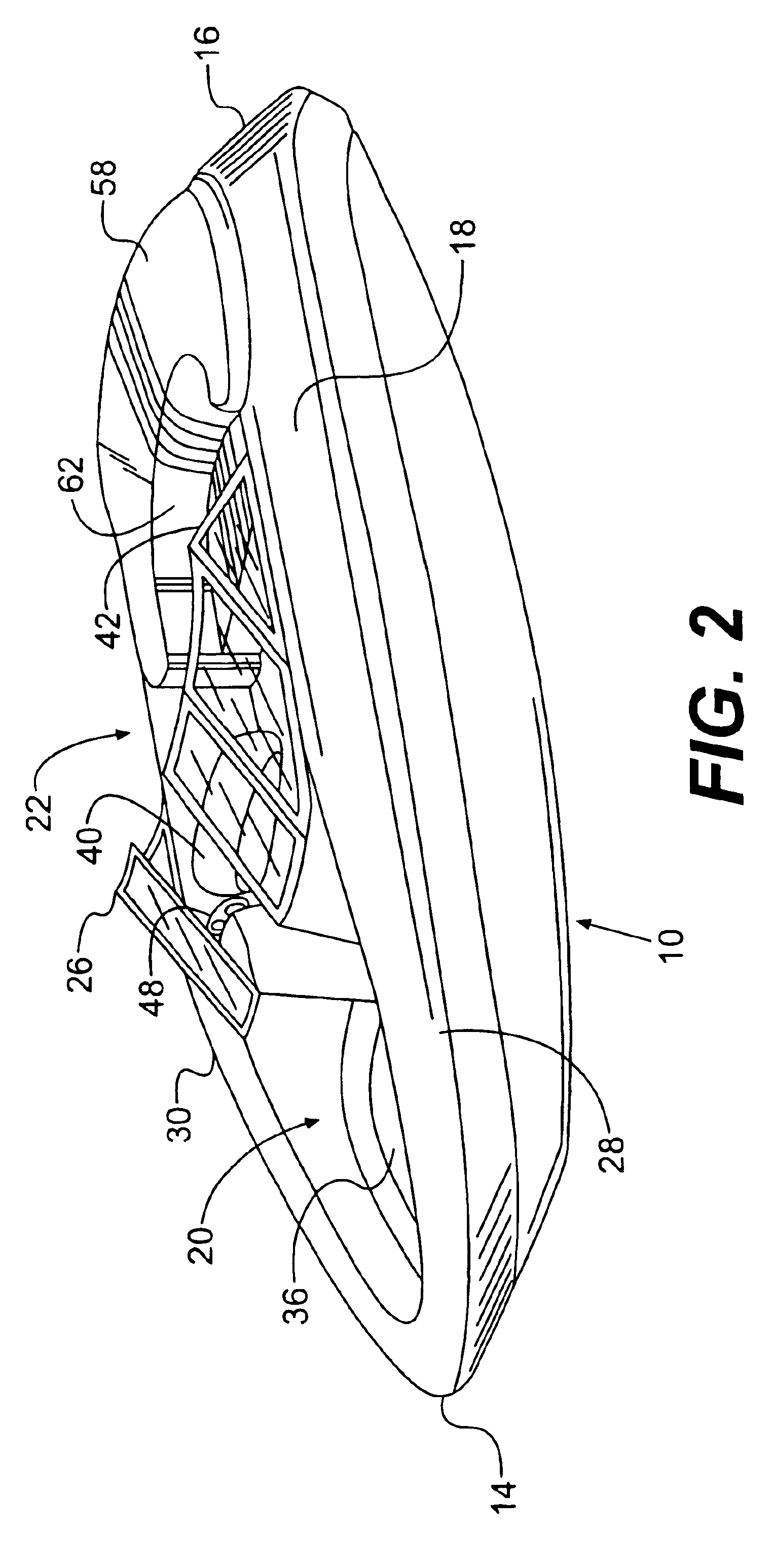Watercraft
a technology for watercraft and decks, applied in the field of boat deck layouts, can solve the problems of limited construction of boats, lack of emphasis on providing sufficient storage for equipment used for such activities, and prior art concerns the positioning of components that are connected to and supporting engines
- Summary
- Abstract
- Description
- Claims
- Application Information
AI Technical Summary
Benefits of technology
Problems solved by technology
Method used
Image
Examples
Embodiment Construction
Throughout the drawings of the present invention, reference will be made to like elements. Where appropriate, like elements will be given the same reference designation.
FIG. 1 is a top view of the watercraft 10 of the present invention. While the watercraft 10 is depicted with a specific configuration, as described more fully below, those skilled in the art will appreciate that one or more of the aspects of the present invention may be incorporated into a watercraft, regardless of the particular configuration and layout. In other words, aspects of the present invention are intended for use on watercraft and are not limited solely to the watercraft 10 depicted and described.
The watercraft 10 includes a hull 12 with a bow 14 and a stern 16. The layout of the deck 18 includes a forward passenger area 20 and a rearward passenger area 22. The forward passenger area 20 is connected to the rearward passenger area 22 by a passageway 24. A windshield 26 extends from the port side 28 to the s...
PUM
 Login to View More
Login to View More Abstract
Description
Claims
Application Information
 Login to View More
Login to View More - R&D
- Intellectual Property
- Life Sciences
- Materials
- Tech Scout
- Unparalleled Data Quality
- Higher Quality Content
- 60% Fewer Hallucinations
Browse by: Latest US Patents, China's latest patents, Technical Efficacy Thesaurus, Application Domain, Technology Topic, Popular Technical Reports.
© 2025 PatSnap. All rights reserved.Legal|Privacy policy|Modern Slavery Act Transparency Statement|Sitemap|About US| Contact US: help@patsnap.com



